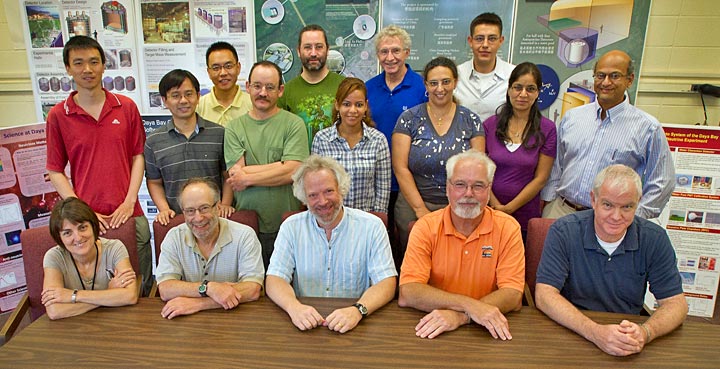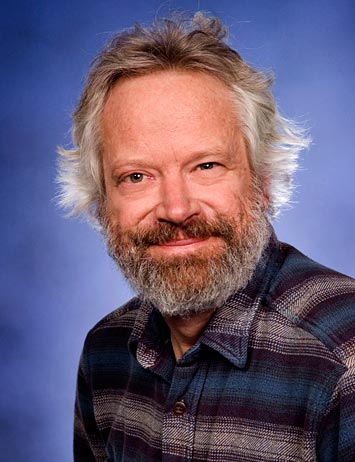Brookhaven and the Daya Bay Neutrino Experiment
October 1, 2014
 enlarge
enlarge
Members of the BNL team on the Daya Bay Neutrino Project include: (seated, from left) Penka Novakova, Laurie Littenberg, Steve Kettell, Ralph Brown, and Bob Hackenburg; (standing, from left) Zhe Wang, Chao Zhang, Jiajie Ling, David Jaffe, Brett Viren, Wanda Beriguete, Ron Gill, Mary Bishai, Richard Rosero, Sunej Hans, and Milind Diwan. Missing from the picture are: Donna Barci, Wai-Ting Chan, Chellis Chasman, Debbie Kerr, Hide Tanaka, Wei Tang, Xin Qian, Minfang Yeh, and Elizabeth Worcester.
The Daya Bay Collaboration, an international group of scientists studying the subtle transformations of subatomic particles called neutrinos, is publishing its first results on the search for a so-called sterile neutrino, a possible new type of neutrino beyond the three known neutrino "flavors," or types. The existence of this elusive particle, if proven, would have a profound impact on our understanding of the universe, and could impact the design of future neutrino experiments. The new results, appearing in the journal Physical Review Letters, show no evidence for sterile neutrinos in a previously unexplored mass range. Read the collaboration press release.
The U.S. Department of Energy’s Brookhaven National Laboratory plays multiple roles in the Daya Bay experiment, ranging from management to data analysis. In addition to coordinating detector engineering and design efforts and developing software and analysis techniques, Brookhaven scientists perfected the "recipe" for a very special, chemically stable liquid that fills Daya Bay's detectors and interacts with antineutrinos. This work at Daya Bay builds on a legacy of breakthrough neutrino research by Brookhaven Lab that has resulted in two Nobel Prizes in Physics.
Comments from U.S. Daya Bay Chief Scientist Steve Kettell
This body of research is helping to unlock the secrets of the least understood constituents of matter—an important quest considering that neutrinos outnumber all other particle types with a billion neutrinos for every quark or electron.
The fairly recent discovery that neutrinos have mass changes how we must think about the Standard Model of particle physics because it cannot be explained by that well-accepted description of all known particles and their interactions. Understanding the details of neutrino mass could have huge implications for our understanding of how the universe evolved. And those details—including how neutrinos oscillate, or switch from one flavor to another, are the essence of the research at Daya Bay and a key to unlocking these mysteries.
The unusual properties of the known neutrinos, particularly their unique mass properties compared to other particles in the Standard Model, give us good reason to suspect that the universe may be full of such neutral particles of other flavors, such as the sterile neutrino. These particles could potentially help account for a large portion of matter in the universe that we cannot detect directly, so called dark matter.
Daya Bay has been an exciting experiment to work on. It has been exquisitely designed and built, enabling us to make several important discoveries (first result and new result) and to search for these particles. And while the latest study from Daya Bay did not detect evidence of sterile neutrinos, it did greatly narrow the range in which we need to search. We will continue to exploit this beautiful experiment to further explore and understand the properties of the mysterious neutrino.
The existence of neutrino mass and mixing leads to further deep questions, in particular whether neutrinos are responsible for the dominance of matter over antimatter in the universe. With the first results from Daya Bay this question now seems answerable with the long-baseline neutrino project planned at DOE’s Fermi National Accelerator Laboratory. Brookhaven scientists identified this scientific opportunity and continue to lead the development of this project, which has now been endorsed by recent national advisory panels as the highest priority domestic project in fundamental particle physics.
2014-5214 | INT/EXT | Newsroom










